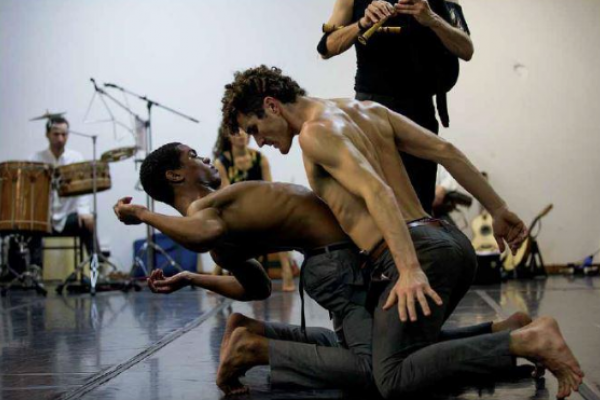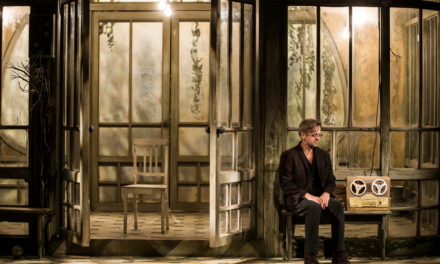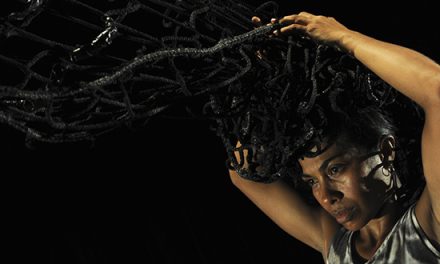You can also read this article in Portuguese.
The trajectory of Portuguese dance mirrors the country’s history. Portugal’s semi-peripheral geography contributed to the late arrival of European cultural movements, including theatrical dance: the practice has been taught at the Lisbon Conservatory since 1839, but its present pedagogy was only implemented in the 1980s. The folklore dances, however, are deeply rooted in Portuguese expressive culture.
With its overseas expansion, Portuguese culture has, since the fifteenth century, mixed its European roots with exchanges with the southern hemisphere. With stable borders for eight hundred years, Portugal is a cohesive country, marked by the tradition of centralized political power in the capital.
The revolution of 1974 ended a five hundred year colonial empire and almost half a century of cultural isolation, imposed by the dictatorship known as Estado Novo (EN) that had dominated the country since 1926. Joining the European Union in 1986 opened up a new path: foreign access, the comprehension of democracy, and ultimately, keeping pace with contemporaneity.
The outbreak of Portuguese contemporary dance is an expression of a country in transformation: of its potentialities, paradoxes, and specificities. Therefore, we can observe the current panorama of Portuguese dance in the light of the rapid transitions of recent decades: from colonial to post-colonial; the efforts of democratization and decentralization; a closed and traditional society that has opened up to the globalized and technological world; a country that has recently witnessed social and economic crises and an unprecedented tourism boom.
Early Stigmas
In spite of the almost non-existent academic-classical tradition, the modern and modernist ruptures of the early twentieth century echoed with the cultured elites of the capital. The visit of the Ballets Russes in Lisbon in 1917-18 inspired the idea of conceiving a Portuguese theatrical dance that could articulate erudition, modernity, and folklore at a time when a nationalist wave ravaged the country, after the fall of the monarchy and the troubled years of the Republic.
However, such an endeavor would only be fulfilled, somewhat paradoxically, in the context of the Estado Novo. Without experienced dancers or choreographers, but with motivation and perseverance, in 1940 the totalitarian regime founded the first Portuguese professional dance company, the Bailados Portugueses Verde-Gaio. As part of the regime’s propaganda efforts, the repertoire exalted the national history and folklore—an idealized representation of the country in which the colonial imagery clearly didn’t fit. The totalitarian power regulated popular culture, the folkloric dances in particular. With rising opposition to the regime, the connotation of the “folkloric dance groups” to the Estado Novo contributed to its isolation in the Portuguese society, especially after the revolution.
Despite the stigma of its birth, Verde Gaio was the backbone of the Portuguese dance; the embryo of the Grupo Experimental de Bailado (Experimental Group of Ballet) founded in 1961, later known as Ballet Gulbenkian (BG), that would become a fundamental reference in the national and foreign contemporary dance field, and of the Companhia Nacional de Bailado (CNB), founded in 1977.
Dancing After the Revolution
In 1974, apart from the BG, the theatrical dance field in Portugal was almost deserted. Three years later, the democratic regime founded the CNB. Following the model of European national companies, the aim was to promote an academic-classical repertoire made in Portugal. The CNB would also open up the contemporary languages, and after the extinction of BG in 2005, it took on a much broader “public service” task: to reconceive itself as the “house of the dance” of the country.
The Choreographic Studios that the BG promoted starting in 1972 were relevant to the genealogy of an “alternative dance” that would greatly expand in the following decade, making possible the first chorographical experiences of young dancers such as Olga Roriz, Margarida Bettencourt, João Fiadeiro, and Vera Mantero in the 1980s.
During the ’80s, BG was responsible for bringing major international figures such as Merce Cunningham, Pina Bausch, and Trisha Brown to Lisbon; and in the adjacent Center of Modern Art, in the emblematic Acarte Festival, emerging European names like Anne Teresa de Keersmaeker and Wim Vanderkeybus lined up with young Portuguese creators.
Throughout those years, small experimental initiatives became iconic. Jazz dance, popularized by the success of the TV series Fame, reached the urban youth, paving the way to the establishment of the Grupo Experimental de Dança Jazz (renamed Companhia de Dança de Lisboa in 1984).
The first independent initiatives developed from this enthusiastic tide mobilized a whole new generation towards dance.
The Euphoric Years of the Nova Dança Portuguesa (New Portuguese Dance)
From this dynamic, a movement of young interpreters-creators broke out, who did not identify with the two previously established dance companies. An iconoclastic and heterogeneous generation that grew up artistically in contact with the voguish Euro-American dance, they ultimately questioned any equivalence between “dance” and “choreography.” It would be coined as the Nova Dança Portuguesa (new Portuguese dance) (NDP)—an analogy (somewhat delayed) to the homologous Nouvelle Danse (French or Belgian) and New Dance (British). It was a post 25 April artistic-sociological phenomenon of a country tuning in to the new European identity and recovering its pace with contemporaneity.
Nevertheless, NDP also manifested certain “Portuguese specificities”: traces of an imaginary and critical commentary, to summon the history and culture of a small, ancient, religious, isolated, and traditional country; recent memories of a tragic and oppressive past that one wanted to purge. A catharsis of a love-hate relationship, presented in a dance populated by convulsive or semi-paralyzed bodies, a metaphor for a country lacerated between attachment to the past and the appeal of the future.
The early ’90s marked the internationalization of Portuguese dance. In the aftermath of the Revolution, the country that threaded the path towards European integration would be represented in the Europalia Festival (Belgium, 1991). NDP pioneers captivated the public and European programmers, who were receptive to the refreshing creative stamina stemming from a fragile foundation, out of a half-forgotten south-western country. In Portugal, this ascending wave would be inflated by the economic ease from the coming of European integration, symbolized by major national events: Lisbon and Porto were Capitals of Culture in 1994 and 2001; and the World Expo (Lisbon, 1998), the culmination which preceded the economic crises that hit the country at the turn of the millennium.
For this generation, during those years, the concept of future meant abroad and Europe.
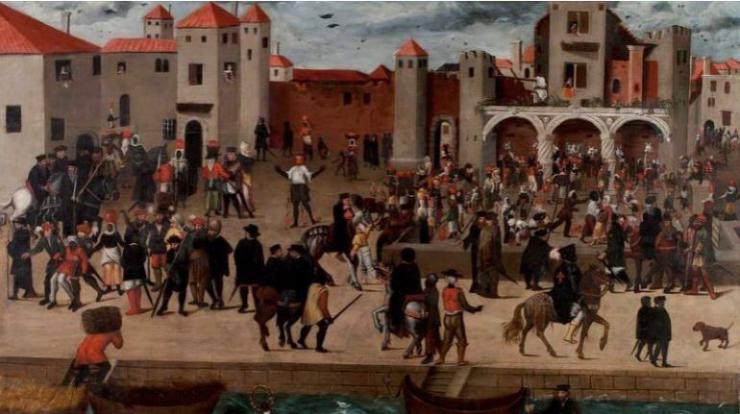
Sixteenth Century multicultural Lisbon. Chafariz d’elRey (c.1570), anonymous painter.
In the Interior of the Country, “The dancers no longer stop traffic”
At that time, there was still a galaxy separating Lisbon from the rest of the country. The explosion radiated, above all, from the capital. But in Porto, poles were emerging (such as Balleteatro, Fundação de Serralves or Companhia Instável) and would prove to be relevant in the development of dance in the north of the country.
Between the ’90s and the beginning of the new millennium, inside and out of the capital, new small structures of creation, production, and training multiplied. The protagonists of NDP entered a sedimentation phase: Olga Roriz, Clara Andermatt, and Paulo Ribeiro created their own companies. Others clustered in production and creation structures, such as Re.Al (João Fiadeiro), Eira (Francisco Camacho), O Rumo do Fumo (Vera Mantero) Jangada de Pedra (Rui Nunes and Aldara Bizarro); or founded associations that would grow and develop around festivals (the case of Danças na Cidade, today Alkantara, that became a reference in the international performing arts scene), or of dance training such as Fórum Dança or the Centro em Movimento (CEM).
Meanwhile, countless structures emerged outside main cities like Lisbon and Porto. Among them, in smaller towns such as Santa Maria da Feira (Ballet Contemporâneo do Norte), Évora (Companhia de Dança Contemporânea), Faro (CAPa/DeVIR), Vila Velha de Rodão (CENTA), Mértola (Dansul), Almada (Ninho de Víboras, Companhia de Dança de Almada), Alcanena and Cartaxo (Materiais Diversos, Tok´arte), Braga (Arte Total), Ourique and Aljustrel (Atalaia), Lagos (Casa Branca), Vila do Conde (Circular), Guimarães (European Capital of Culture/2012), Amadora (Quorum Ballet), Vila Nova de Gaia (Armazém 22 and La Marmita), Viseu (Companhia Paulo Ribeiro) or Montemor (Espaço do Tempo)—these last, an initiative from Paulo Ribeiro and Rui Horta, choreographers that opted for the countryside after having significant international careers.
The tradition of centralized power is endemic. Advances, retreats, and discontinuities due to the different political cycles had not helped the desired decentralization. In the late 1990s, for instance, a national network of municipal theatres was designed. Equipment was requalified or built. However, the theatres that integrated the network, their management model, and the agreements between municipalities and the central state for its operation are yet to be defined.
Nonetheless, political incentives and municipal involvement have contributed to these new dynamics. However, state subsidization requires counterparts: alongside the artistic goals, the promotion of “public service” appropriated to the regions, and to the priorities of each political cycle. This imposes certain agendas on the structures that might not co-ordinate with what they consider their vocation.
The Portuguese countryside is aged and desertified. It is difficult to combat the disadvantages of interiority and to attract artists to small localities. The format of “artistic residencies,” however, has contributed to the maintenance of longer collaborations at a time, with interesting results, both artistic and in the local communities.
The world was bound to reach the countryside. A new population began to gravitate around these new poles. But still, there is much to be done to take Portugal’s countryside to the world. The regional singularities are challenging, but also an opportunity to explore new creative reservoirs. These are processes that require stable long-term commitments.
Throughout the country there is another much less visible change: dozens of schools are integrating or articulating dance training in the official school curriculums, and the notion that dance studies require contextualization and deepening had led to their entry into college education. However, the articulation between these two systems is still to be optimized.
Currently, many of the new creators and interpreters no longer come from the capital and the circuit of national and international tours no longer have its exclusive epicenter in Lisbon. In the localities of the interior, strangely dressed dancers “no longer stop traffic,” commented dancer Leonor Keil, who has for many years settled in the conservative city of Viseu.
A symptom of how much the country has changed is the fact that Porto is becoming a new hegemonic pole of dance in Portugal.
The Portuguese Dance, the Crises, and the (Artistic) Paradigms of the Twenty-first Century
The economic crises at the beginning of the twenty-first century found the dance scene in active decentralization and in the process of integrating international circuits. But also, as structures in sedimentation, pulverized and disarticulated among each other, dependent and vulnerable to the political cycles.
In 2004, the contemporary dance community mobilized itself for its interests, around REDE, an association of organizations for contemporary dance that today brings together more than thirty artistic collectives.
This reality crossed over time with a new conjunctural paradigm: with the exception of privately- or state-supported companies, dance companies with repertoires and fixed casts are endangered. Budgetary and logistical limitations have led independent groups to replace permanent casts for hired dancers for specific projects. Small productions, economical and portable, not always adequate to the large scale of many auditoriums, designed at a time when the conceptions of performance were different.
The precariousness of work also converged with the current performative trends: the need for performers capable of nurturing artworks with their eclectic and personalized formative paths, which might only be possible to develop when there is individual autonomy.
The creative triggers have become very diverse and academic dance has ceased to be the main source of new creators and performers: visual arts, music, theatre, new technologies, street dance, folklore, non-western body approaches, sport, cinema, circus, ethnographic research, community or university research, the (personal) scripts in contemporary creation have become unpredictable. Between dance with an academic or erudite background and performative genres of more communitarian or social expression, the lines are blurred. There are independent choreographers interested in exalting the virtuous movement and physicality, and companies, such as CNB, exploring interdisciplinary experimentation, less formal aesthetics, or new connections to the community. These deep changes have implied—not always in a peaceful manner—a reconfiguration of what was conventionally understood as “dance”, or the “dance audiences.”
It may be justified to affirm that the hybridization of the performative languages would have been favorable to the endemic fragilities of the Portuguese dance. Fortuitousness or not, some of the most successful recent creations are found precisely in the territories of the intercultural, transdisciplinary, and the approximation between formal and informal dimensions of dance.
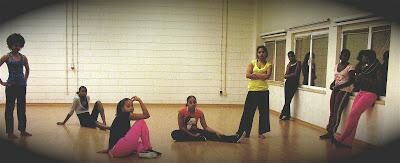
A pause during a rehearsal of Filipa Francisc’s piece Iman, with the dance group Wonderful Kova M.
The “Other Centers” of the Extreme Southwest of Europe
In 1974, lacking in artistic exchange, the country was craving openness and change. Behind it lay the traumatic memory of the dictatorship, the colonial war, and a long imperial past. Echoing collective process, the Portuguese dance community needed to orient itself towards the North and the West. On the tide of change, there was no room for approaches to the popular culture, which was ostracized (like the fado once was) by its connotation to the old totalitarian regime or to the expressive cultures of the formerly colonized countries.
Thus, at the end of this reflection, it is fair to examine the relationship of Portuguese dance with the country´s popular culture and postcolonial legacies.
The migratory flows between Portugal and former African colonies have permeated the Portuguese society: see how Pina Baush’s foreign view captured it in Mazurka Fogo(1998), her Lisbon’s piece. If the expression of this africanity is timid and recent in the contemporary dance scene, it is curious to note, by contrast, how much the “African social dances” (like quizomba) have engaged in the practices of everyday life.
However, a tenuous but significant inflection of this absence of post-colonial or popular cultures legacies in theatrical dance gave signs in the 1990s, from the artistic residences of Clara Andermatt in Cape Verde; and then, with Dançar o que é nosso, a cooperation project with the PALOP (Portuguese-speaking African Countries), launched in 1998 by Alkantara. And in the new millennium a slight intensification is noticeable: Miguel Pereira works in Mozambique, and Rui Lopes Graça with the Companhia Nacional de Canto e Dança de Moçambique (Mozambique’s National Dance and Choir Company) and the Companhia de Dança Contemporânea de Angola (Angola’s Contemporary Dance Company); Filipa Francisco introduces Iman, a project with Afro-descendant dancers in the suburban neighborhood of Cova da Moura. There are also choreographers-interpreters, among others, from Cape Verde (such as António Tavares and, later, Marlene Freitas) and Mozambique (Panaibra Cambra) moving through Portugal. As for Brazil, in spite of the dynamics of its performative art scene, exchanges are often informal.
At the same time, one can recognize an increasing interest in contemporary approaches to performative popular culture. These include, among others, recent works by Clara Andermatt and Filipa Francisco with Portuguese folklore. In both cases, the regional decentralization melded it to a “thematic decentralization”.
The emergence of “other creative centers” is doubly relevant: for its artistic singularity, and for its significance in the context of the Portuguese culture; dance is untangling from ghostly shadows and finally surpassing postcolonial guilt regarding popular culture.
Lately, the economic crises and the disappointment with the European dream seem to be accelerating the processing of old traumas and triggering an identitary reconciliation. This new collective receptivity might be transforming popular culture and post-colonial legacies into fashion. Such processes underpin, however, other reverses and appropriations: with the crisis, the Portuguese-speaking countries have emerged as an alternative economic space; adding to this, and with the recent tourism boom, Lusophone cultural expressions have gained a political dimension with value in the cultural marketing.
English translation by Fernanda Galvão and Luciana Doljak.
This article was originally published on IETM on the 19th of April 2018, and has been reposted with permission. Read the original article.
This post was written by the author in their personal capacity.The opinions expressed in this article are the author’s own and do not reflect the view of The Theatre Times, their staff or collaborators.
This post was written by Luísa Roubaud.
The views expressed here belong to the author and do not necessarily reflect our views and opinions.

